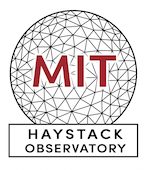More information see NSF website
This project will investigate two significant and sometimes concurrent phenomena in the mid-latitude ionosphere, which is a region of atmosphere with relatively higher concentration of charged particles from about 60 km to 1000 km altitude. These two phenomena are called storm-enhanced density (SED) plumes and the main ionospheric trough. They refer to large spatial variations in electron density (Ne) in the ionosphere, often associated with geospace storms which are disturbances in the Earth’s magnetic fields due to sudden changes in solar energy input. These large electron density gradients are known for imposing substantial and detrimental space weather effects on navigation and communication systems.
The overall goal of this project is to characterize these ionospheric density gradients in a three-dimensional (3-D) domain, and to understand the fundamental physical processes responsible for gradient formation and development. This will be accomplished by conducting three tasks: (a) creation of a 3-D electron density profile database for moderate-to-major geospace storms since 2006, using a data assimilation system to produce the database; (b) construction of the first regional 3-D empirical models of SED plumes and the main trough, containing information on their detailed spatial-temporal variations and geophysical dependence; and (c) through a combined physics-based and data-driven modeling approach, advancing understanding of SED and main trough mechanisms, including relative roles of electrodynamics and neutral dynamics as well as associated ionosphere-thermosphere coupling processes.

